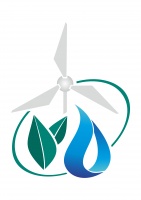Using combined-type drainage in Fergana Region
| Title | Using combined-type drainage in Fergana Region |
|---|---|
| Category of tools | Collector-drainage system |
| Field of application |
|
| Usability of practice for adaptation to climate change | Moderate |
| Implemented by | Management Department of the Foundation for Reclamation Improvement of Irrigated Land |
| Used by |
Country: Uzbekistan Province: Fergana Region District: Kuva District Settlement: Khamroli-Ota Farm |
| Local specifics |
The site is located in the zone of ground water shallow occurrence |
| Photos |
|
| Practice usage period |
Start date: 01.01.2010 End date: 31.12.2012 |
| Problem solved through this practice |
Flooding of settlements; salination of irrigated land |
| Tools used in the practice |
GIS-technologies and remote-sensing tools |
| Description of the practice and its results |
In 1980, specialists of NPO SANIIRI (Research and Development Association “Central Asian Research Institute of Irrigation”) designed and for the first time applied this type of drainage in the Qarshi Steppe where it demonstrated its efficiency. The project was suspended due to lack of funding. The re-launch of the project and installment of a combined drainage system in Kuva District (2010) once again confirmed its high efficiency and profitability, especially in areas of confined underground waters. Further on, the model was applied in Rishtan, Altyarik and Baghdad Districts where it is successfully working. Actions:
Results: Financial and economic: Specific construction costs (sum/ha) of the combined drainage system were twice less compared to horizontal drainage models. Vertical drainage of 1 hectare of land requires 700-800 kWh of energy, whereas the combined drainage is hyperpiestic. Maintenance costs for combined drainage systems are also much lower compared to horizontal and vertical drainage models – specifically, twofold less than for closed horizontal and threefold less for vertical. The combined drainage systems also allowed increasing crops productivity. Technical: The reclamation condition of farm land has improved. |
| Lessons learnt and recommendations made |
Lessons learnt: The practice has confirmed its high efficiency and profitability of combined-type drainage, especially in areas with confined underground water. Recommendations: It is necessary to widely apply combined-type drainage where hydro-geological conditions allow it. |
| Source of practice |
R&D product by NPO SANIIRI (Research and Development Association “Central Asian Research Institute of Irrigation”)
|
| Brief information on the project |
Project title: Application of GIS-technologies for reclamation. Project duration: Jan 2010-Dec 2012 (3 years). Project goal and objectives: comprehensive support of Reclamation Expedition (RE) specialists; introduction of new technologies; enhancing RE technical capacities to ensure a more expedient implementation of projects to improve the reclamation condition of irrigated land with the aim of receiving better agricultural yields with the simultaneous maintenance of environmental equilibrium in the area. Project beneficiaries: Fergana Region and Syr Daria Region Reclamation Expeditions. Project implementer: Management Department of the Foundation for Reclamation Improvement of Irrigated Land. |
| Funding source | UNDP |
| Information sources |
Ekologicheski Vestnik (Environmental Digest) Journal, Issue 11, 2012 (http://lrf.uz/?p=283&lang=ru).
|
| Form submission date | 19.04.2018 |
| Print Compare with other practice |




